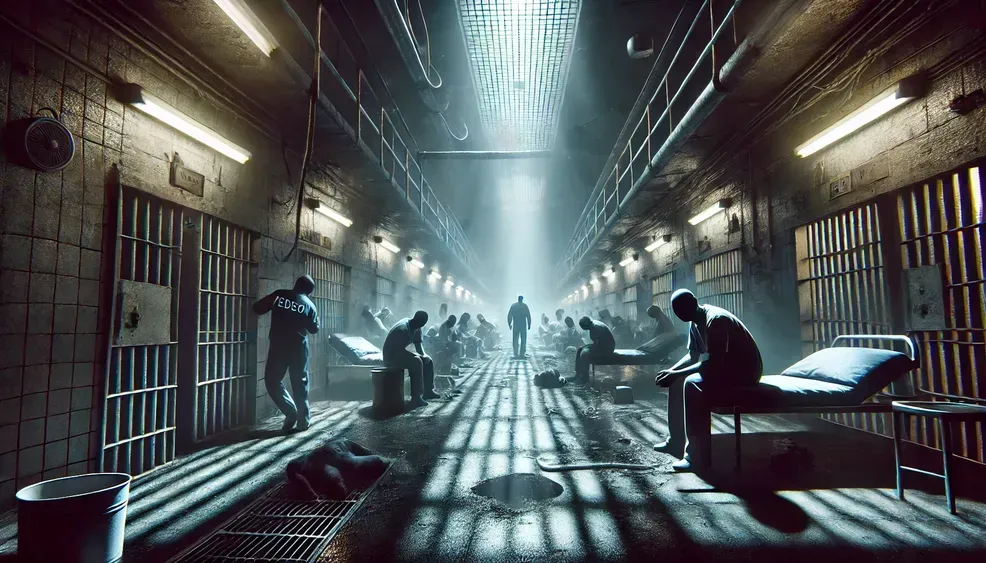The Crisis in Federal Prisons: A System in Decline
More than a decade ago, synthetic marijuana was developed to mimic the effects of cannabis while avoiding detection in standard drug tests. In response, new testing protocols were introduced, and the manufacturers adapted by altering the chemical composition. This cat-and-mouse game has continued, and today’s versions—known as K2, Spice, Toochi, or Deuce—are barely recognizable from their original formulations.
Modern synthetic drugs are designed with one goal: to maximize intoxication while evading detection. They are engineered to be as addictive as possible, with little to no regard for human health. The result is a substance that turns users into incoherent, hallucinating shells of their former selves. It is particularly rampant in federal prisons, where it is smuggled in by being sprayed onto paper and then smoked.
Even a minuscule amount—a speck the size of a pinhead—can push an otherwise stable individual into a state of psychosis, convinced they are burning alive, being consumed by insects, or hunted by invisible demons. It is the single most destructive force within the prison system today. Because Deuce often does not register on drug tests, prison staff often dismiss visibly high inmates as merely experiencing a "deuce episode" without considering the possibility of other drug use. The result? A drug epidemic that is both widespread and largely ignored.
The Economics of Addiction Behind Bars
The Bureau of Prisons (BOP) exacerbated this crisis in 2019 when it slashed inmate wages by 75% to manage its budget shortfalls. Instead of addressing the rampant waste and mismanagement within the system, the BOP shifted the financial burden onto inmates, many of whom relied on their modest earnings—often no more than $60 a month—to afford basic hygiene products, food, and phone calls.
With little legitimate income, many turned to drug dealing. A single sheet of Deuce sells for $800 to $1,100. Dealers break it down into credit card-sized portions for $250, smaller strips for $25, and tiny fragments—measuring just one millimeter—selling for $5 to $10. It is the most lucrative prison hustle, and its prevalence has created an environment where addiction and violence are rampant.
A System in Disrepair
While synthetic drugs ravage the inmate population, the physical infrastructure of federal prisons is crumbling. Maintenance is often deferred for months, with work orders languishing for 90 days or more. Plumbing systems are clogged and deteriorating because inmates, lacking access to trash cans, flush their waste—everything from food to contraband. HVAC systems, crucial for preventing the spread of disease, are neglected until they fail. Electrical systems are stripped for parts by inmates forced to resort to makeshift cooking solutions after the BOP removed microwaves.
Ironically, the BOP employs hundreds of skilled inmate workers in its Commercial Maintenance Services (CMS) departments. These individuals, paid mere pennies an hour, have the expertise to repair the failing infrastructure. Yet, because they require staff supervision to check out tools, their labor goes largely unused. The reason? BOP staff are too preoccupied with pilfering and reselling repair equipment and parts to oversee any actual repairs.
The Cost of Neglect
Drugs in prison lead to drug debts, and addiction fosters poor financial decisions. Those who cannot pay their debts face violent reprisals, forcing them to seek protective custody in Special Housing Units (SHU), also known as “the hole.” With a limited number of beds—often just 200 in a facility housing 1,600 inmates—the system is overwhelmed. As a result, those who commit actual acts of violence often serve only a brief SHU sentence before being released due to space constraints.
Meanwhile, educational and rehabilitation programs—meant to reduce recidivism—are repeatedly sidelined. Any excuse is enough to suspend programming: staff shortages, weather conditions, or even minor security concerns. The BOP’s failure to prioritize rehabilitation ensures that inmates are released no better—and often worse—than when they arrived.
Breaking the Cycle
Every systemic failure outlined here is solvable. The BOP has the budget and the means to address these issues, yet it remains paralyzed by bureaucratic inertia and a punitive mindset. The belief that harsher conditions will force compliance has never been more misguided. The adage “the beatings will continue until morale improves” could not be more fitting.
Ironically, the BOP’s relentless drive to strip inmates of everything in the name of punishment has created an opportunity for change. If the agency shifted its focus from punishment to rehabilitation, even a small percentage of inmates could successfully reintegrate into society. But this requires a fundamental shift in approach—more incentives, fewer deterrents, and a commitment to genuine reform.
The Bureau of Prisons must abandon its policy of neglect and take responsibility for its role in perpetuating crime, addiction, and recidivism. The goal should not be merely to warehouse human beings but to equip them with the skills and mindset necessary to return to society as productive citizens. The time to act is now.
